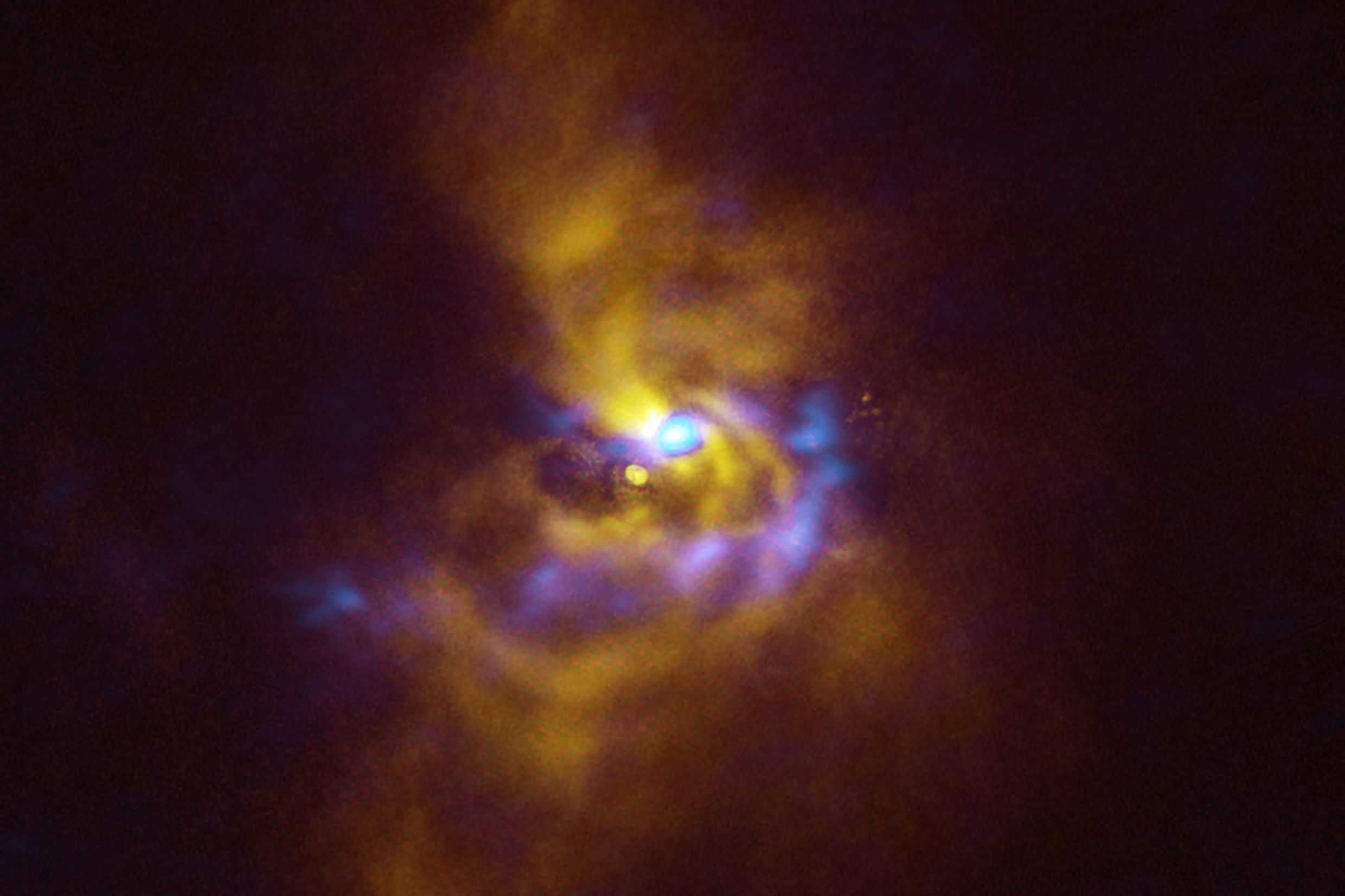Large dusty clumps around young star provide insight into how planets are born
The findings could shed light on how giant planets like Jupiter form, scientists said.

Your support helps us to tell the story
From reproductive rights to climate change to Big Tech, The Independent is on the ground when the story is developing. Whether it's investigating the financials of Elon Musk's pro-Trump PAC or producing our latest documentary, 'The A Word', which shines a light on the American women fighting for reproductive rights, we know how important it is to parse out the facts from the messaging.
At such a critical moment in US history, we need reporters on the ground. Your donation allows us to keep sending journalists to speak to both sides of the story.
The Independent is trusted by Americans across the entire political spectrum. And unlike many other quality news outlets, we choose not to lock Americans out of our reporting and analysis with paywalls. We believe quality journalism should be available to everyone, paid for by those who can afford it.
Your support makes all the difference.Scientists have observed large dusty clumps close to a young star about 5,000 light years away from Earth, providing insight into how planets are born.
A team of international scientists used telescopes belonging to the European Southern Observatory – an intergovernmental research organisation – to analyse stellar material surrounding V960 Mon in the constellation Monoceros.
The astronomers said their “incredible discovery” revealed dust particles crashing into one another to form much larger clumps, which they believe could collapse to form new giant planets like Jupiter.
Alice Zurlo, a researcher at the Universidad Diego Portales in Chile, said: “This discovery is truly captivating as it marks the very first detection of clumps around a young star that have the potential to give rise to giant planets.”
V960 Mon first caught the eye of scientists in 2014 when it suddenly grew brighter in the distant sky.
Observations by the Sphere instruments on ESO’s Very Large Telescope (VLT), located on Cerro Paranal in the Atacama Desert of northern Chile, showed V960 had increased its brightness by more than 20 times.
This prompted astronomers to go back and look at data gathered by the Atacama Large Millimeter/submillimeter Array (Alma), a radio telescope composed of 66 antennas spread across the Atacama desert.
The observations from Alma – which looked into the structure of V960 Mon – revealed the stellar material surrounding V960 Mon was assembling together to form a series of intricate spiral arms, with distances greater than the solar system.
Ms Zurlo said: “With Alma, it became apparent that the spiral arms are undergoing fragmentation, resulting in the formation of clumps with masses akin to those of planets.”
Astronomers believe giant planets like Jupiter form either by a process known as core accretion – when dust grains come together – or by a phenomenon known as gravitational instability – when large fragments of the material around a star contract and collapse.
To date, researchers have only found evidence for core accretion.
No one had ever seen a real observation of gravitational instability happening at planetary scales - until now
Philipp Weber, a researcher at the University of Santiago in Chile, said: “No-one had ever seen a real observation of gravitational instability happening at planetary scales – until now.”
Sebastian Perez, also from the University of Santiago, said: “Our group has been searching for signs of how planets form for over 10 years and we couldn’t be more thrilled about this incredible discovery.”
As part of the next steps, astronomers will use another ESO instrument – the Extremely Large Telescope (ELT) – to examine the star system in even greater detail.
Mr Weber said: “The ELT will enable the exploration of the chemical complexity surrounding these clumps, helping us find out more about the composition of the material from which potential planets are forming.”
The research is published in the journal Astrophysical Letters.